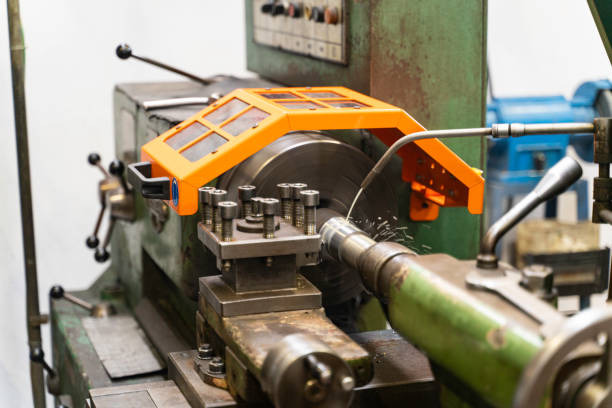Mold components are critical parts used in the manufacturing industry, particularly within injection molding systems. These precision-engineered elements are responsible for shaping, forming, and creating products from plastic or other moldable materials. Without high-quality mold components, the efficiency and accuracy of production can be compromised, leading to increased waste, higher costs, and lower quality products. As global demand for high-volume, high-precision products increases, so does the need for better mold designs and components that can handle complex geometries and fast cycle times.
The Core Elements That Make Up Mold Components
To understand how mold components work, one must first recognize the variety of parts that make up a mold system. These include core pins, ejector pins, guide pillars, bushings, cavity plates, sliders, and lifters. Each of these components plays a unique role in the molding cycle. For instance, core pins and cavity plates define the shape of the final product, while ejector systems ensure smooth removal of parts from the mold. Guide pillars and bushings maintain alignment, preventing wear and extending the mold’s service life. The precision in the manufacture and assembly of these mold components is what guarantees dimensional accuracy and functional integrity of the molded parts.
Material Selection and Manufacturing of Mold Components
The performance of mold components heavily relies on the material used in their manufacturing. Typically, tool steels such as H13, P20, or stainless steel are chosen due to their hardness, durability, and resistance to heat and wear. Modern production methods including CNC machining, EDM (Electrical Discharge Machining), and surface treatments like nitriding or PVD coatings are used to enhance their life span and reliability. Choosing the right material and treatment can significantly reduce downtime and improve the mold’s productivity, making this a critical consideration for manufacturers.
Importance of Design Precision in Mold Components
Designing mold components with precision is not optional it is mandatory for maintaining the consistency and quality of molded products. Even minor deviations in the dimensions or geometry of these components can lead to defects such as flash, warping, or incomplete filling of molds. CAD and CAE software tools have revolutionized mold design by allowing engineers to simulate mold flow, stress distribution, and cooling behavior before production begins. This helps in identifying potential issues and optimizing the design of mold components for efficiency and quality.
How Mold Components Influence Production Efficiency
Efficient mold design is closely linked to the performance of mold components. The better the quality and precision of the components, the less downtime is experienced during production. High-quality ejector systems, for instance, ensure that molded parts are removed quickly and cleanly, reducing cycle time. Similarly, wear-resistant guide pins and bushings reduce maintenance intervals. As the demand for more sustainable manufacturing grows, mold makers are also exploring mold components that enable faster mold changes, energy-efficient cooling systems, and reduced scrap rates.
Common Challenges and Solutions in Mold Component Integration
One of the key challenges manufacturers face is integrating mold components in a way that ensures alignment and optimal performance under repeated stress and thermal cycling. Misalignment can result in part defects or even damage to the mold. Regular maintenance, correct installation procedures, and using standardized components help mitigate these issues. Another concern is the thermal management of the mold; poorly designed cooling channels or improper material selection can affect cooling time, surface finish, and dimensional accuracy. Advanced simulation and high-quality materials address these challenges effectively.
Technological Innovations in Mold Component Design
The field of mold components is constantly evolving with the introduction of smart materials, modular designs, and automation-compatible components. One such innovation includes the use of self-lubricating components that minimize maintenance and extend mold life. Another is the integration of sensors into mold components to monitor temperature, pressure, and wear in real time, enabling predictive maintenance. Such advancements not only improve productivity but also help companies stay competitive in a rapidly changing manufacturing landscape.
FAQS
What are mold components used for?
Mold components are used in mold-making tools to shape and form plastic or other materials into specific products during injection molding, blow molding, or die casting processes.
Why is material selection important for mold components?
Material selection is critical because it determines the component's durability, heat resistance, and wear resistance, directly affecting mold performance and longevity.
How often should mold components be maintained or replaced?
This depends on usage, material, and environmental conditions, but regular inspections and maintenance can extend life. Components should be replaced when wear affects product quality.
Are custom mold components better than standard ones?
Custom components can provide better performance for specialized applications, but standardized components are cost-effective and easier to replace. The choice depends on production needs.
How do technological advancements improve mold components?
Technological advancements like sensor integration, smart materials, and simulation software improve component reliability, maintenance schedules, and overall production efficiency.
Conclusion
Mold components are the foundation of effective mold design and a major determinant of manufacturing success. Their precision, durability, and functional design directly influence production speed, product quality, and operational efficiency. As manufacturers strive for higher output and tighter tolerances, investing in superior mold components becomes not just a smart choice but a necessary one. With advances in materials, design tools, and monitoring systems, the future of mold components looks even more promising. Understanding and implementing the best practices in mold component selection and maintenance will empower manufacturers to meet growing demands and maintain a competitive edge.
Author Bio
Alex Turner is a manufacturing technology writer with deep expertise in Fecision, where precision and performance meet innovation. Learn more about how cutting-edge mold components can transform your production processes at https://fecision.com/.




